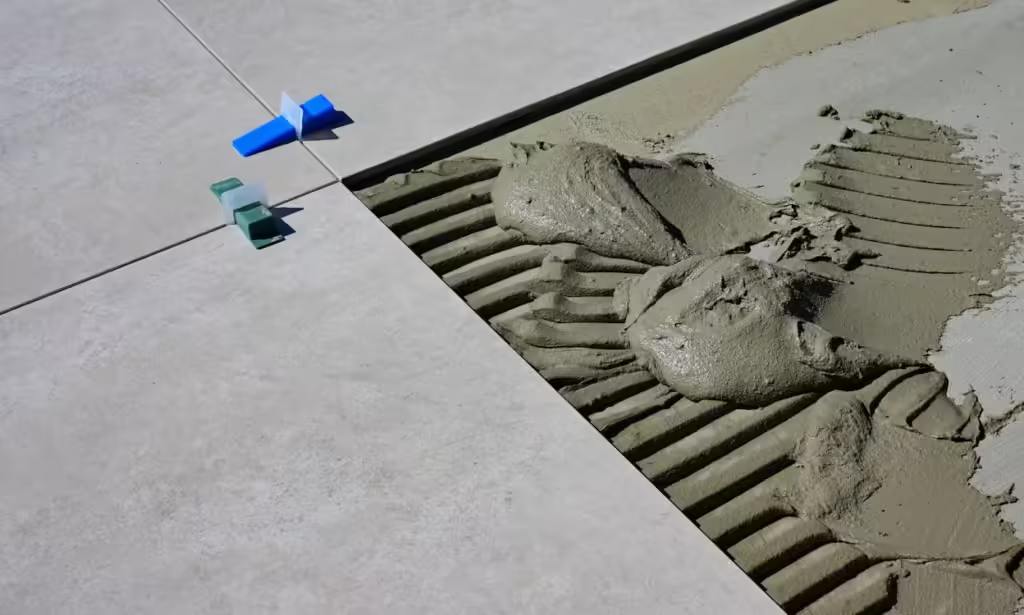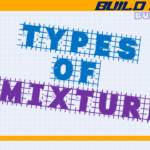Grouting is a fundamental part of construction, used for filling spaces or voids between structures to ensure stability and load-bearing strength. One particular type of grout—non-shrink grout—plays a pivotal role in projects where precision, stability, and long-term durability are paramount. From my experience as a construction professional, I have seen non-shrink grout used in various challenging scenarios where traditional grout would not suffice.
In this article, I will discuss the special use of non-shrink grout, its benefits, and real-world applications, while drawing on personal insights and experiences from numerous construction projects.
What is Non-Shrink Grout?
Non-shrink grout is a specially formulated grout that does not shrink as it sets. Unlike conventional grout, which may shrink slightly during curing, non-shrink grout is designed to maintain its volume and form, making it an ideal material for areas that require precision.
Non-shrink grout often contains expansive agents that compensate for the natural shrinkage that occurs as water evaporates during the setting process. The result is a more reliable and consistent filling material that provides a durable and stable structure.
In my early years of construction, I worked on several projects where regular grout caused issues due to slight shrinkage. This led to voids in critical areas, which compromised the integrity of the structure. That experience showed me how important non-shrink grout could be in ensuring long-lasting structural performance.

Figure: Uses of Non-Shrink Grout in Construction.
Key Properties of Non-Shrink Grout
The unique composition of non-shrink grout gives it several distinct properties that make it a go-to material for high-precision construction projects:
A. Volume Stability
Non-shrink grout maintains its volume during the curing process, meaning it does not contract or expand excessively. This property ensures that the grout fills the intended space without creating gaps or cracks.
B. High Compressive Strength
One of the most critical attributes of non-shrink grout is its high compressive strength. This characteristic makes it suitable for applications where heavy loads or high stress are involved, such as under base plates and in machinery foundations.
Personal experience:
During a large-scale industrial project, we had to anchor heavy machinery with exact precision. Regular grout wasn’t strong enough to withstand the loads, so we opted for non-shrink grout. Its high compressive strength ensured that the equipment stayed securely in place without any settlement.
C. Flowability and Workability
Non-shrink grout is highly flowable, allowing it to penetrate even the most confined spaces. Its workability ensures that it can be easily poured and manipulated, making it a reliable solution for both large pours and intricate areas.
D. Quick Setting Time
Non-shrink grout has a relatively fast setting time, making it ideal for time-sensitive projects. The quick setting ensures that construction timelines are not delayed unnecessarily.
Negative Experience:
In one case, we had initially underestimated the setting time of non-shrink grout, leading to minor delays in aligning machine bases. This taught us the importance of planning and preparing when working with materials that set quickly.
Special Uses of Non-Shrink Grout in Construction
Non-shrink grout serves a wide range of applications, many of which require precision, stability, and strength. Here are the most notable uses of non-shrink grout in construction.
A. Anchoring Bolts and Machinery
One of the most common uses of non-shrink grout is in the anchoring of bolts and heavy machinery. Since machinery often vibrates and moves under heavy loads, it is crucial that the base and anchor bolts are securely fastened. Non-shrink grout provides the necessary strength and volume stability to keep the machinery in place without settling or shifting.
In my experience, we used non-shrink grout for a factory where massive turbines were installed. The grout had to flow smoothly under the base plates, fill every void, and cure without shrinking to avoid alignment issues. The precision that non-shrink grout offered was indispensable, ensuring that the turbines remained in their exact positions.
B. Grouting Under Base Plates
Non-shrink grout is essential for grouting under base plates of structural steel columns, especially in critical load-bearing applications. The grout must support the weight of the entire structure without shifting or settling, which non-shrink grout can reliably do due to its high compressive strength.
In one commercial project, we faced issues with leveling under base plates due to minor voids when using traditional grout. Switching to non-shrink grout completely eliminated these problems and provided a solid foundation for the steel columns.
C. Precast Concrete Joints and Connections
Non-shrink grout is frequently used to fill joints and connections in precast concrete construction. Since precast elements must fit together with high precision, it’s essential that the grout used in the joints maintains its form and strength over time. Shrinkage in these joints could cause misalignment, cracking, or other structural issues, all of which are prevented by non-shrink grout.
D. Repair of Damaged Concrete
When repairing damaged concrete, such as cracked or spalled areas, non-shrink grout provides a high-strength solution that maintains its integrity over time. The grout is often used to repair both horizontal and vertical surfaces, where shrinkage would otherwise create voids or weak spots.
Positive Experience:
On a bridge repair project, we used non-shrink grout to patch damaged concrete sections. The non-shrink property allowed the repairs to integrate seamlessly with the existing concrete, providing lasting durability and eliminating the need for further repairs.
E. Dowel Bar and Rebar Installation
When installing dowel bars or reinforcing bars (rebar), non-shrink grout is often used to fill the voids around the bars and ensure a secure bond. This is especially important in seismic regions or where structures must resist heavy dynamic loads.
F. Grouting of Machinery and Equipment Foundations
Machinery and equipment foundations require a grout that can handle heavy loads and resist the constant vibrations caused by machinery operations. Non-shrink grout is ideal for this purpose, as it maintains its integrity even under dynamic conditions.
G. Filling Pipe Sleeves and Conduits
Non-shrink grout is often used to fill pipe sleeves and conduits in both vertical and horizontal applications. It provides a waterproof, durable seal that prevents movement or damage over time. This use is common in utility construction or mechanical systems installation.
H. Structural Strengthening and Reinforcement
In structural strengthening projects, non-shrink grout is used to reinforce concrete or masonry elements. By injecting non-shrink grout into cracks or voids, weakened areas can be strengthened without removing or replacing large sections of material.
Positive Outcome:
We recently worked on a historic building renovation, where non-shrink grout was used to strengthen the weakened foundations without altering the building’s original appearance. The project was a success, thanks to the grout’s ability to maintain the structure’s integrity.
Advantages of Using Non-Shrink Grout in Construction
There are several reasons why non-shrink grout is widely used in construction projects where high performance and durability are required.
A. Precision and Accuracy
Non-shrink grout ensures that gaps and voids are filled accurately, providing long-lasting precision in applications like machinery anchoring, base plates, and precast elements.
B. Long-Term Durability
The material’s resistance to shrinkage and cracking means that structures built using non-shrink grout will last longer and require less maintenance. This is particularly important for infrastructure projects, industrial buildings, and heavy machinery installations.
C. High-Strength Performance
Non-shrink grout offers high compressive strength, making it suitable for load-bearing applications. It also maintains its structural integrity over time, even in challenging conditions like extreme temperatures or high vibrations.
D. Easy Application
Thanks to its high flowability, non-shrink grout is easy to apply, even in tight spaces. It provides reliable results with minimal effort, making it a preferred choice for contractors.
Challenges and Limitations of Non-Shrink Grout
While non-shrink grout is an excellent material for many construction applications, it also comes with certain challenges.
A. Quick Setting Time
As I mentioned earlier, non-shrink grout can have a relatively fast setting time, which can be both an advantage and a challenge. If not handled properly, the fast setting can lead to difficulties in adjusting machinery or completing other tasks that require additional time.
B. Cost
Non-shrink grout is typically more expensive than traditional grout materials. While the cost is justified by its performance, contractors must carefully consider budget constraints when deciding whether to use it.
Personal Experience:
In a recent project, we initially used non-shrink grout to fill all joints, but due to budget limitations, we decided to switch to a more cost-effective material for non-critical areas. By doing so, we balanced cost and performance without compromising quality in critical applications.
Conclusion
Non-shrink grout is an invaluable material in construction, offering precision, strength, and long-term durability. It plays a crucial role in projects requiring stability, especially in machinery anchoring, base plate grouting, and structural repairs.
In my years of experience, I’ve witnessed firsthand how non-shrink grout has transformed project outcomes. Its special properties make it the go-to material for construction projects where shrinkage could lead to failure or instability. Understanding its unique characteristics, knowing when to use it, and properly managing its setting time can greatly improve construction quality and performance.
References
- ASTM C1107, “Standard Specification for Packaged Dry, Hydraulic-Cement Grout (Nonshrink)”
- ACI 351.1R-12, “Grouting between Foundations and Bases for Support of Equipment and Machinery”
- “Non-Shrink Grout: Principles and Practices,” Construction Materials Journal
- Kosmatka, S. H., Kerkhoff, B., & Panarese, W. C., “Design and Control of Concrete Mixtures,” PCA Engineering Bulletin








Leave a Reply